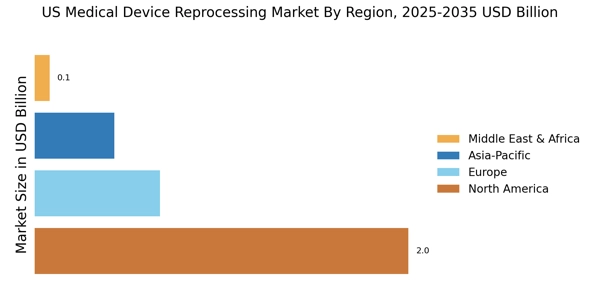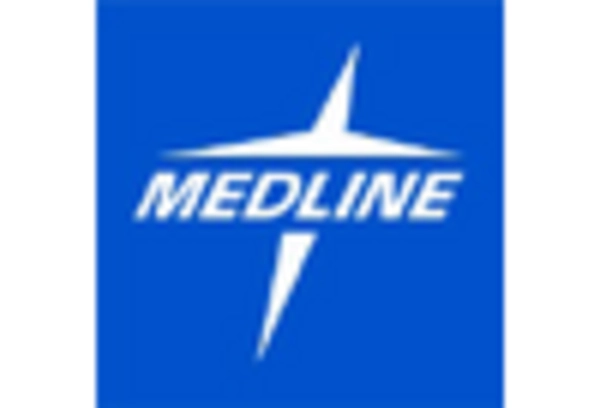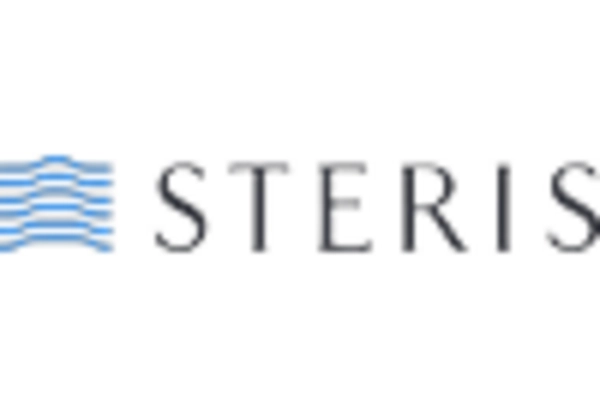The medical device-reprocessing market exhibits a dynamic competitive landscape characterized by innovation, strategic partnerships, and a focus on sustainability. Key players such as Stryker Corporation (US), Medline Industries, Inc. (US), and Cardinal Health, Inc. (US) are actively shaping the market through various strategic initiatives. Stryker Corporation (US) emphasizes technological advancements in reprocessing techniques, while Medline Industries, Inc. (US) focuses on expanding its service offerings to enhance customer engagement. Cardinal Health, Inc. (US) is leveraging its extensive distribution network to optimize supply chain efficiencies, thereby reinforcing its market position. Collectively, these strategies contribute to a competitive environment that is increasingly focused on operational excellence and customer-centric solutions.
In terms of business tactics, companies are increasingly localizing manufacturing to reduce lead times and enhance responsiveness to market demands. Supply chain optimization remains a critical focus, particularly as companies seek to mitigate risks associated with global supply chain disruptions. The market structure appears moderately fragmented, with several key players holding substantial market shares, yet numerous smaller entities also contributing to the competitive dynamics. This fragmentation allows for a diverse range of offerings, catering to various customer needs and preferences.
In October 2025, Stryker Corporation (US) announced a partnership with a leading technology firm to develop AI-driven reprocessing solutions aimed at improving efficiency and reducing costs. This strategic move underscores Stryker's commitment to integrating advanced technologies into its operations, potentially setting a new standard for reprocessing practices in the industry. The collaboration is expected to enhance Stryker's competitive edge by streamlining processes and improving patient outcomes.
In September 2025, Medline Industries, Inc. (US) launched a new initiative focused on sustainability in medical device reprocessing. This initiative includes the introduction of eco-friendly materials and processes, aligning with growing environmental concerns among healthcare providers. By prioritizing sustainability, Medline aims to differentiate itself in a crowded market, appealing to environmentally conscious customers and stakeholders.
In August 2025, Cardinal Health, Inc. (US) expanded its reprocessing services through the acquisition of a regional competitor, enhancing its market presence and service capabilities. This acquisition not only strengthens Cardinal's operational footprint but also allows for the integration of innovative reprocessing technologies from the acquired entity. Such strategic expansions are indicative of Cardinal's proactive approach to maintaining its leadership position in the market.
As of November 2025, the competitive trends in the medical device-reprocessing market are increasingly defined by digitalization, sustainability, and the integration of AI technologies. Strategic alliances are becoming more prevalent, as companies recognize the value of collaboration in driving innovation and enhancing service offerings. Looking ahead, competitive differentiation is likely to evolve from traditional price-based competition to a focus on technological innovation, supply chain reliability, and sustainable practices. This shift may redefine market dynamics, compelling companies to adapt and innovate continuously to meet the changing demands of healthcare providers.


















Leave a Comment